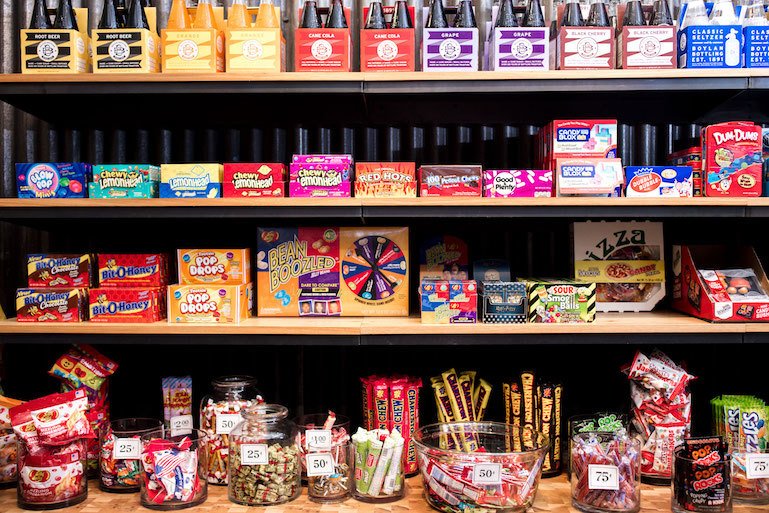
The Ultimate Retail Store Opening and Closing Procedure Checklist
There are many different types of retail businesses, each with their own unique operational and security requirements.
Regardless of whether you are a small business owner running a family business or a manager responsible for overseeing the operations of a large retail clothing store, you’ll need to keep daily operations running smoothly.
Establishing opening and closing procedures that leave as little to chance as possible can really help. Handled correctly, these two key periods of your day will leave you free to deal with the urgent details that tend to come up for most retailers. They also allow your employees to focus on what is most important, taking care of your customers.
No two businesses are alike and no two locations are exactly the same. Keeping that in mind we offer you these general guidelines for developing your own personalized retail store opening and closing procedure checklist. This daily checklist will help you keep your operations running smoothly, ensure the health and safety of your staff, and allow you to give your shoppers the best possible customer service.
Opening Security
Opening and closing times are considered high-risk periods for robberies. Store staffing and customer traffic are generally low, creating less risk for the criminals. At the same time, most breaking and entering crimes naturally occur while businesses are empty.
Building Inspection
To avoid walking into a bad situation or possible disturbing valuable evidence, you should inspect all windows and doors when first arriving. If you find any signs that locks or alarm systems have been tampered with, contact the police before entering the building.
Robbery Prevention
To avoid placing yourself and your employees at undue risk, consider the following when developing your checklist.
Neither you nor any employee should ever open the store alone. One person should always be observing the local surroundings for any suspicious behavior or conditions like people loitering nearby or unfamiliar cars in the parking lot. At the first sign of trouble, the authorities must be notified.
If your security system is equipped with a panic code or dress code, be sure anyone who may be opening the store is as familiar with it as they are the arm and disarm codes. Being sure to notify your security company and/or the local police. Practice using this code so it stays fresh in everyone’s minds.
Once you are inside the store, doors should never be left unlocked before you open for business. If necessary, post an employee at the door to let in other employees or possible suppliers and distributors. Make sure the door is relocked after each person, especially if you’re in the process of transporting cash or depositing cash into your register or point of sale (POS) system’s cash drawer.
Consider establishing an “all clear” signal, such as a blind set in a particular position or sign turned a certain way that will alert staff members if there is a problem in the store.
SEE ALSO: Winning at Loss Prevention (Your Retail Shrink Action Plan)
Getting Ready for Business
Once you are safely in the building and sure all is secure, it’s time for you and your employees to get down to the business of getting ready to do business.
Opening Inspection
When first entering the building, all lights ought to be turned on and a general inspection of the premises should be made. While assuring that closing staff members completed all procedures properly and making note of any discrepancies, you should also look for any undiscovered issues in your store.
Wet spots on floors, ceilings, or along walls could be a sign that you have HVAC, roofing or plumbing problems. Vermin like mice, other rodents, or insects that might be hiding when your store is busy may leave signs behind from their time in the dark. If you do find these signs, it’s time to either put out traps or contact an exterminator. It’s one problem you don’t want to let linger. This also the best time to make sure that all of your in-store signage is up to date and that any stocking issues or housekeeping issues are corrected.
Setting-Up Your Store
Once you are sure all is well with your store it’s time to turn on the cash registers or boot up the computers and POS systems. Turn on any televisions or sound systems that you use and open the safe so you can double check and set your cash drawers for the mornings business. Just for the sake of peace of mind and security, this last is a task that should always be observed by at least two people.
Shutting Down at the End of the Day
Just as your opening checklist sets the tone for your business day, your closing checklist will greatly influence how the next morning will go. Details overlooked at closing time create more work for your opening crew and can influence how the first customers of the day are served.
Closing is another time when businesses need to be highly conscious of their security and anti-theft procedures. Criminals know this is the time of day when the largest amount of money is likely to be on the premises and that tired employees wanting to finish the day’s work are more likely to be rushing instead of watching.
Clearing the Store
It’s never a good idea to rush customers out the door, but in any business, there is a closing time. It’s appropriate to make an announcement at a proper time (say, 15 minutes before closing) to warn clients that the store will be closing soon. It’s also reasonable to lock the doors and station a member of your staff to allow customers to exit only. This prevents a constant stream of business from trickling in and lessens the danger of door-rush type of robbery.
Security Check
Never assume because no one is visible that your store is empty. Your nightly checklist should include provisions for a visual inspection of all areas including restrooms, stockrooms, and closets. This is a good idea to help prevent both robberies and burglaries from someone hiding away.
Housekeeping
Even if your retail establishment is large enough to require an overnight cleaning and stocking crew, having your closing crew complete some rudimentary housekeeping will install a sense of ownership in them and make everyone’s life easier.
Straightening Shelves
Customers and browsing shoppers don’t always put products back where they belong or in a neat manner. An ideal time for your staff to start straightening up and reorganizing misplaced items is while they’re waiting for the last customers to exit the building.

Nightly Cleaning and Stocking
If your closing crew is also responsible for part of your house cleaning then the specific tasks that they own should be spelled out on your closing checklist. This helps avoid the “not my problem” syndrome that can plague many businesses. The same is true of any stocking duties that are their responsibilities.
Closing Registers and POS Systems
This is a job that should be reserved for or at least overseen by management personnel. In some cases, you might also trust a long-tenured cashier with this task. A specific time should be laid out for counting cash and closing each cash drawer in your retail store. If you use more than one register or POS system, you can start closing them, but always wait on the final one until after the last customer exits the building.
The exact procedure you use to count down your drawers and reconcile your sales for the day will greatly depend on the type and size of business you have but it should be systematic with each step clearly defined. This makes it possible to more easily train new personnel to your standard operating procedure (SOP) and helps assure that no oversights occur.
SEE ALSO: How to Balance a Cash Drawer Like a Pro
Final Walkthrough
As an owner/manager it is your responsibility to make sure that all the tasks required to properly close your store are completed before heading out. At the end of each night, you should do a full walkthrough of the building before the lights are turned out.
You should check the status of key tasks and correct any discrepancies you find. Similarly, windows and doors should be double checked before the lights are extinguished for the night.
When Leaving for the Night
Just as no one should open a store alone, the finale lockup and setting of the alarm should be a team effort. One person should provide oversight while the other performs all the necessary functions. There is no such thing as being too safety conscious.
There you have it, a general approach to an opening and closing checklist for your retail store. Developing all-encompassing task lists for opening and closing procedures can be a tedious procedure. It takes time and a thorough eye to develop them, and it’s wise to consider them living documents. As your business changes, you should constantly be updating them. While it requires a decent investment of time and energy, this commitment to task management is worth the effort in the long run.
Having a set of checklists that breakdown and cover all major activities from the time you pull into the parking lot creates accountability both for you and your people. At the same time, they make oversight a much easier process. The name on the checklist is always the responsible party, so you know who to go to if there’s a problem. They also act as a preventive measure to be sure that important safety and operational procedures are followed, allowing you to ensure your business runs smoothly and efficiently.
Want to try ShopKeep for yourself?
Just answer a few easy questions.
Need help finding the right point of sale?
Just complete the form. We’ll call you right back to explain how ShopKeep can work for you.
Hit the ground running.Sprinting, in fact!
Read our free, comprehensive guide, Small Business 101, to learn all you need to know about starting a thriving business.

